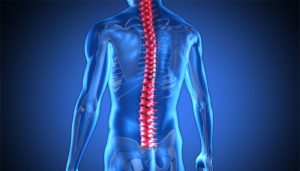
There are an estimated 288,000 people living with spinal cord injuries in the United States alone, with an estimated 17,700 new cases each year. In many of these cases, breathing assistance is required. There are multiple options available, though many people, including physicians, are not always aware of the options that are available. For quadriplegic breathing assistance, the Avery Diaphragm Pacemaker may be a life-transforming option.
Levels of Spinal Cord Injury Affecting Breathing
Not all spinal cord injuries affect breathing. There are seven cervical vertebrae and eight cervical nerves, each directly correlating to specific needs. The cervical nerves are identified as C1 through C8.
- Individuals with a C1 or C2 spinal cord injury may be entirely dependent on ventilatory assistance for breathing.
- Individuals with a C3 spinal cord injury may occasionally weaned from ventilatory assistance, but typically require some sort of breathing assistance.
- Individuals with a C4 spinal cord injury may need ventilatory assistance, but are often weaned from such assistance.
- Individuals with spinal cord injuries at C5 and lower are rarely in need of ventilatory assistance, and individuals with injuries below the cervical spine (which is classified as paraplegia) do not lose respiratory function.
Therefore, it is typically only high spinal cord injuries (above C4) that need breathing assistance, with breathing assistance typically becoming more common the higher the level of injury.
Diaphragmatic Breathing and Spinal Cord Injury
High spinal cord injuries affect the diaphragm, which plays a major role in breathing, as Its contractions helps inflate the lungs. The extent of the injury will typically determine the level of breathing issue. These respiratory complications from spinal cord injuries, stemming from reduced function of the diaphragm typically necessitate breathing assistance. There are multiple methods available to assist breathing for those with spinal cord injuries and quadriplegia, and many patients have preferences and specific needs determining what method they use. Of course, you should consult your physician to help determine the best method of breathing assistance for your individual situation. However, it is important to be aware of multiple options to address with your doctor, as they may or may not be familiar with all available options.
Breathing Assistance for Spinal Cord Injuries
There are generally two main types of breathing assistance for those with spinal cord injuries. One is positive airway pressure (PAP) ventilators, often called “mechanical ventilation.” The second is diaphragm pacing.
PAP Ventilators
Mechanical ventilation is used to permanently or temporarily replace or assist with breathing through artificial means. A PAP ventilator will force oxygen into the lungs and help with the exhalation of carbon dioxide through suction. Though this is helpful for those who need breathing assistance, this is not the natural breathing pattern. Instead of drawing the air in utilizing negative pressure, air is “forced” in using positive pressure.
Common reasons individuals may prefer not to use mechanical ventilation include:
- Discomfort caused by the ventilator as it needs to be attached via tracheostomy or tube and mask
- Limited mobility due to size and type of device
- Discomfort caused by the positive pressure, which is not a natural breathing pattern
- Possibility of airway injury, such as collapsed lungs or ventilator-assisted pneumonia
- Financial implications
Diaphragm Pacing Systems
A diaphragm pacing system contains surgically implanted receivers and electrodes paired with an external transmitter. The system sends electric pulses to the phrenic nerve, which causes the diaphragms to contract. When the diaphragms contract, it causes inhalation of air. When the pulses stop, the diaphragms relax and exhalation occurs. This regulated pattern creates a breathing experience which is more natural than positive pressure ventilators.
Common reasons individuals may prefer a diaphragm pacing system include:
- More natural breathing experience than PAP ventilators
- Increased mobility
- Significant potential financial savings
- Reduced health risk
- Silent operation
- Improved sense of smell
- Ease of eating and drinking
You can learn more about advantages of the Avery Diaphragm Pacemaker here.
It is also important to note that not all diaphragm pacing systems are equal, and there are a lot of myths about diaphragm pacing.
Myths Associated with Diaphragm Pacing
Misinformation or lack of information has caused many misconceptions about diaphragm pacing. For example, diaphragm pacing DOES NOT burn out the phrenic nerve, though there is misinformation out there leading people to believe it does. When evaluating with your doctor whether diaphragm pacing is right for you, and what that best device is, it is important to have the facts.
Myth – Diaphragm pacing is only available for those 18 years or older
Fact – The Avery Diaphragm Pacemaker has FDA approval for adult and pediatric use.
Myth – Diaphragm pacing does not allow changing of respiratory rate
Fact – The Avery Diaphragm Pacemaker allows adjustment of respiratory rate, left and right amplitudes
Myth – Protruding wires are necessary for diaphragm pacing
Fact – The Avery Diaphragm Pacemaker has no protruding wires, further reducing risk of infection
Myth – Diaphragm pacing has not received FDA approval at this time
Fact – The Avery Diaphragm Pacemaker has full FDA PMA approval for both adult and pediatric use (and CE marking privileges under the European Active Implantable Medical Device Directive
Myth – Diaphragm pacing cannot be utilized for those with cardiac pacemakers
Fact – The Avery Diaphragm Pacemaker can be implanted in those who have a cardiac pacemaker
There are many benefits of the Avery Diaphragm Pacemaker, compared to both PAP ventilation, and other diaphragm pacing devices. For example, only the Avery device has bilateral redundancy, meaning that if one side has a rare failure, the other side will continue to pace – there is no single point of failure. For a more detailed comparison between the Avery device and the leading competitor, please see “Why the Avery Diaphragm Pacemaker.”
Get More Information
If you’re interested in learning more about seeing your options for breathing assistance after a spinal cord injury, please click the “request information” button below and we will be in touch with you with more information to help you and your doctor decide what your best course of action is. If you have any specific questions, please let us know. Our team is here to help you!
Request More Info

